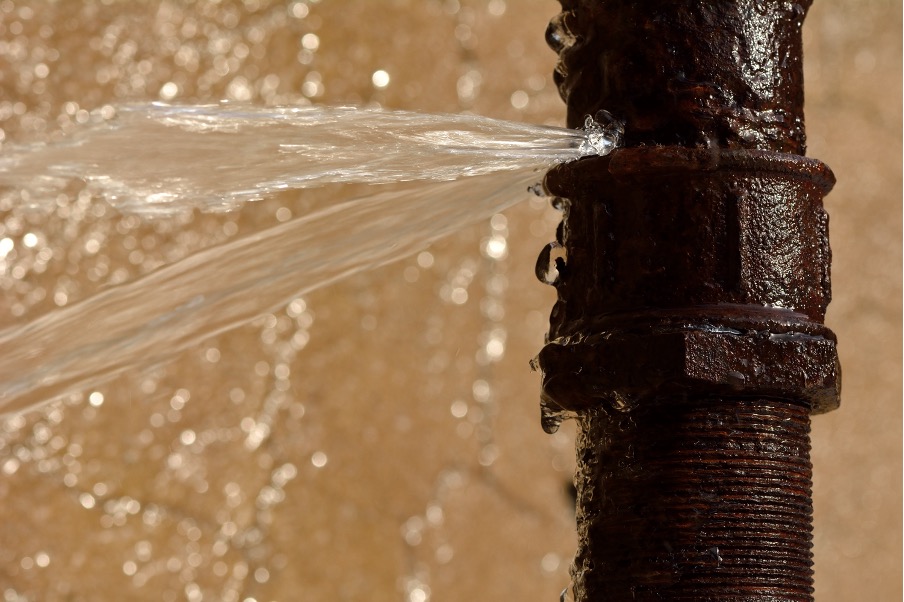How to Check If Your House Has a Concealed Leakage
How to Check If Your House Has a Concealed Leakage
Blog Article
We have uncovered this great article about Finding hidden leaks listed below on the web and figured it made perfect sense to relate it with you on my blog.

Early detection of leaking water lines can alleviate a potential calamity. Some little water leaks might not be noticeable.
1. Take A Look At the Water Meter
Every residence has a water meter. Examining it is a guaranteed way that aids you uncover leakages. For starters, switch off all the water resources. Ensure no person will flush, make use of the faucet, shower, run the cleaning machine or dish washer. From there, go to the meter and also watch if it will change. Since no person is using it, there must be no movements. That suggests a fast-moving leakage if it relocates. Similarly, if you find no changes, wait a hr or 2 as well as check back once more. This means you may have a slow-moving leakage that might also be below ground.
2. Check Water Consumption
Evaluate your water bills and also track your water intake. As the one paying it, you should see if there are any type of inconsistencies. If you detect sudden changes, regardless of your usage being the same, it suggests that you have leaks in your plumbing system. Keep in mind, your water expense must drop under the very same range each month. A sudden spike in your expense shows a fast-moving leakage.
A steady boost every month, also with the very same practices, shows you have a slow leakage that's likewise slowly intensifying. Call a plumber to extensively check your residential property, specifically if you feel a cozy location on your flooring with piping beneath.
3. Do a Food Coloring Test
30% comes from bathrooms when it comes to water intake. Test to see if they are running correctly. Decrease flecks of food shade in the container and also wait 10 minutes. There's a leakage between the tank and also dish if the shade in some way infiltrates your dish throughout that time without flushing.
4. Asses Exterior Lines
Do not forget to check your outside water lines as well. Must water seep out of the connection, you have a loosened rubber gasket. One tiny leak can lose lots of water and surge your water bill.
5. Inspect as well as Assess the Circumstance
Home owners need to make it a behavior to check under the sink counters and also even inside cupboards for any type of bad odor or mold development. These 2 red flags show a leak so timely attention is required. Doing routine examinations, even bi-annually, can save you from a major issue.
Examine for discolorations and deteriorating as a lot of devices and also pipelines have a life expectations. If you believe leaking water lines in your plumbing system, do not wait for it to escalate.
Early detection of leaking water lines can alleviate a prospective disaster. Some small water leaks might not be visible. Checking it is a guaranteed way that helps you discover leaks. One little leak can lose bunches of water as well as increase your water expense.
If you presume leaking water lines in your plumbing system, do not wait for it to rise.
WARNING SIGNS OF WATER LEAKAGE BEHIND THE WALL
PERSISTENT MUSTY ODORS
As water slowly drips from a leaky pipe inside the wall, flooring and sheetrock stay damp and develop an odor similar to wet cardboard. It generates a musty smell that can help you find hidden leaks.
MOLD IN UNUSUAL AREAS
Mold usually grows in wet areas like kitchens, baths and laundry rooms. If you spot the stuff on walls or baseboards in other rooms of the house, it’s a good indicator of undetected water leaks.
STAINS THAT GROW
When mold thrives around a leaky pipe, it sometimes takes hold on the inside surface of the affected wall. A growing stain on otherwise clean sheetrock is often your sign of a hidden plumbing problem.
PEELING OR BUBBLING WALLPAPER / PAINT
This clue is easy to miss in rooms that don’t get much use. When you see wallpaper separating along seams or paint bubbling or flaking off the wall, blame sheetrock that stays wet because of an undetected leak.
BUCKLED CEILINGS AND STAINED FLOORS
If ceilings or floors in bathrooms, kitchens or laundry areas develop structural problems, don’t rule out constant damp inside the walls. Wet sheetrock can affect adjacent framing, flooring and ceilings.
https://www.servicemasterbyzaba.com/blog/how-to-detect-water-leakage-in-walls/

I'm certainly very enthusiastic about Detecting hidden plumbing leaks and I'm hoping you enjoyed reading the new article. Sharing is nice. You just don't know, you may very well be doing someone a favor. Thanks so much for taking the time to read it.
Report this page